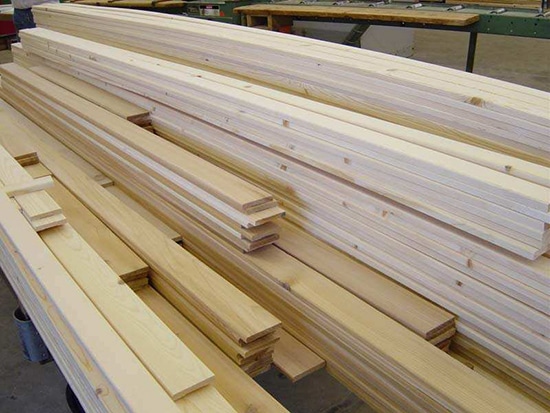As I’ve mentioned in previous posts over the years, while I’m not the handiest or craftiest guy, I do make an effort to expand my DIY skills when I can. One thing that often leaves me scratching my head is purchasing lumber whenever I take on a project that requires it.
You’d think lumber would be simple; it’s just going and buying a piece of wood, right? But it’s surprisingly complex. There are so many choices that, even with a supply list in hand, I often find myself wandering the lumber section at the home improvement store for 20 minutes trying to figure out which pieces of wood I should buy. Common board? Structural? C or D grade plywood? Pressure treated?
Whenever I’ve done research on lumber, I could find some of the information that I needed in one place, and some of it in another. But I could never find one comprehensive resource that offered all the nitty gritty in a single location. So to consolidate everything for my own purposes, and for our readers, I decided to write this article. I realize most of you won’t be reading through this for enjoyment; what I hope is that you’ll be able to file it away, and refer to it whenever you have a lumber-related question of any kind.
Strap on your tool belt, and let’s do this.
Types of Lumber: Softwood and Hardwood
There are two types of lumber: softwoods and hardwoods. Softwood lumber comes from conifer trees like pine, fir, spruce, and cedar. These woods get their classification for a reason; they can be easily dented with just your fingernail. Softwood lumber also absorbs and loses moisture much easier than hardwoods, so extra care must be taken to maintain the wood’s stability over a lifetime. Pressure treating softwood is one way to maintain its soundness when exposed to the elements. More on that later.

Softwood lumber
Softwood lumber is cheaper because conifer trees grow faster than hardwoods. Consequently, softwood lumber is primarily used in construction, like in framing a house or building a deck. If you’re going to do a home DIY project, you’re likely going to use softwood lumber. You can find it aplenty at your local big box home improvement store.

Hardwood lumber
Hardwood lumber comes from deciduous trees, which have broad leaves that fall off in the cold months. The most common trees you’ll see hardwood lumber come from are oak, maple, walnut, hickory, and mahogany. As you can gather from the name, most hardwoods are harder than softwoods (with the exception of balsa wood), and they aren’t as easily dented.
Hardwood trees take a much longer time to grow to maturity, so the lumber they’re turned into is much more expensive than the softwood variety. Consequently, hardwood lumber is typically used in fine woodworking, furniture construction, cabinetry, and flooring. If you want to get into woodworking, you’ll primarily be using hardwoods. Big box hardware stores don’t stock much of it though, so you’ll often have to visit a specialty woodworking store or a lumberyard to purchase it.
With the basic distinction between softwood and hardwood lumber out of the way, let’s get into the nitty gritty of each type.
 Dremel 7700-1/15 Multi...
Check Amazon for Pricing.
Dremel 7700-1/15 Multi...
Check Amazon for Pricing.
 Top Handle Jig Saw
Buy New $61.50
(as of 10:37 UTC - Details)
Top Handle Jig Saw
Buy New $61.50
(as of 10:37 UTC - Details)
 PORTER-CABLE Router, F...
Buy New $149.00
(as of 08:55 UTC - Details)
PORTER-CABLE Router, F...
Buy New $149.00
(as of 08:55 UTC - Details)
 BLACK+DECKER Random Or...
Buy New $46.54 ($0.63 / oz)
(as of 11:14 UTC - Details)
BLACK+DECKER Random Or...
Buy New $46.54 ($0.63 / oz)
(as of 11:14 UTC - Details)





